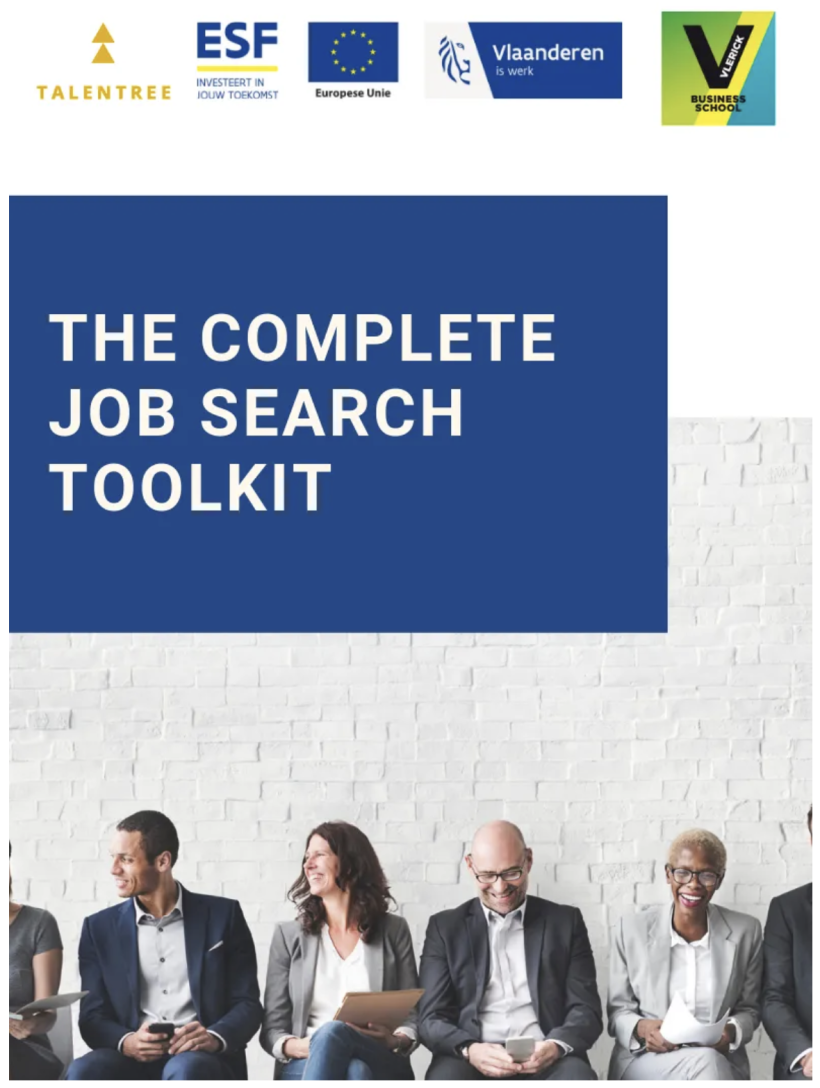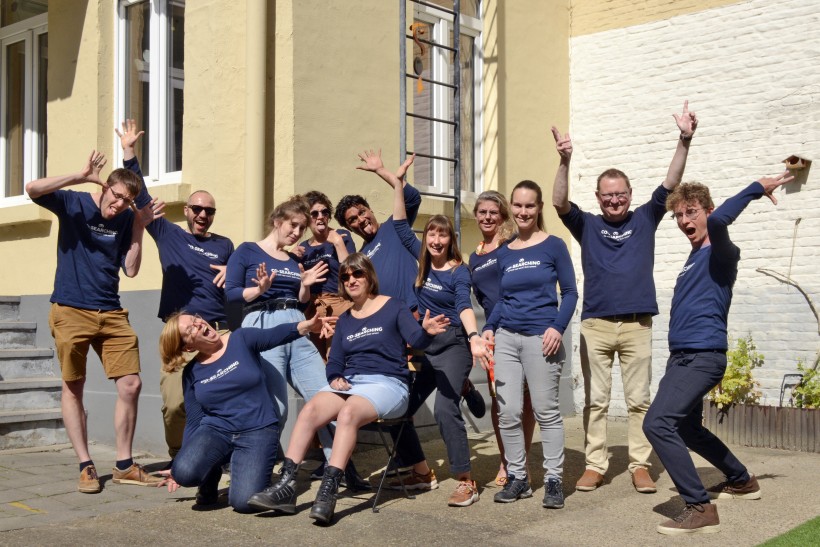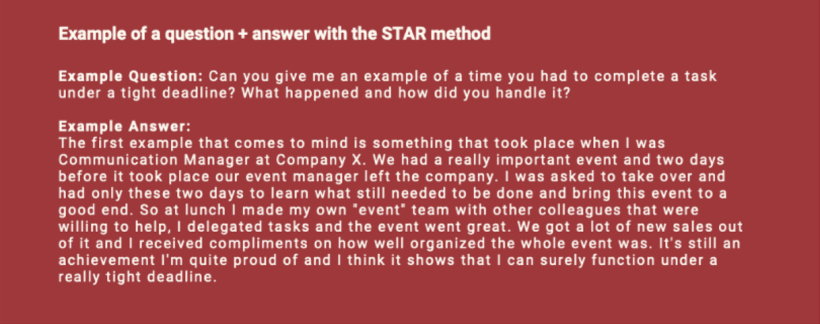In this blogpost, Zhanna shares her takeaways from the complete job search toolkit, a resource that will come in handy for newcomers looking for work in Flanders.
I almost lost my zeal in the pursuit for a career switch. How could I not? The long lists of expectations deployed by employers are discouraging, to say the least. Little by little, my motivation sunk: maybe this goal was just unattainable.
Unless… what if I told you there is a way to gain skills and knowledge, and be equipped to pivot in about 6 months? Sounds interesting? Keep reading! And don’t miss the method that boosted my interviewing process: the STAR method.
The complete job search toolkit: what does it stand for?

A few months ago, my mentor sent me a 110 page PDF loaded with colourful photos and titled The complete job search toolkit. I expected big empty phrases with scarce practical ideas decorated with rows of sponsors’ logos on every page. My first judgement was misleading though, as the toolkit offers useful insight into the recruitment process in Flanders.
The complete job search toolkit was designed to help international and multicultural talents to prepare for a job search in the best possible way.
The toolkit is structured in 5 chapters:
1. Setting your new job goals.
2. Preparing your CV and cover letter.
3. The importance of networking.
4. From first call to getting hired.
5. Kick-off in the company.
Every chapter contains theoretical material, practical tips and describes trends on the Belgian labour market. At the end of each chapter, you will find testimonies of people from different fields as well as many examples of how to cope with certain issues. For instance, what are the bottleneck professions? How to make a career switch? Is IT the answer? What internship opportunities do you have?
While the chapters about preparing a CV and cover letter and about the importance of networking cover basic information available everywhere, tools 1 and 4 shed light on the career switch that many of us newcomers pursue, and nuances of the recruitment screening process.
Paid and unpaid opportunities
Finding a new job, redefining yourself and getting to know the local scene can take some time. A normal process for this kind of transformation can easily take up to 1 year, so don’t feel demotivated if you haven’t found your way after a couple of months! It’s logical that setting your new job goals, building your network, perhaps gaining a new skill or two doesn’t happen overnight (p. 8).
As I mentioned in this blogpost, my purpose is to convince you to experiment, to learn about yourself, to try new positions and to open up with your story.

Doing an internship is a good way to get acquainted with a new role. In the first tool, I learned about two paid training opportunities available in Flanders: the BIS (beroepsinlevingsstage) and the IBO (individuele beroepsopleiding). In a nutshell, the BIS focuses on equipping you with job-related competences; it provides a legal framework to allow a company to hire you as an intern. It is not an employment contract, rather a training contract targeting crucial skills and tasks specific to a workplace. If you are registered at VDAB, you may contact your potential employer and ask for the possibility to do a BIS internship. Formalities lay down on the employer’s side.
On the other hand, the IBO embraces a different formula for individual professional training. This programme gives you a chance to master a new profession with the guarantee of employment at the end. Not only do you learn the nuances of your new role and gain the necessary experience, you will also receive a fixed term or permanent contract in the company if you successfully complete your IBO. The maximum duration for this programme is 6 months.
The VDAB gives further coaching and mentorship on these opportunities.

Another way to kick-start your career could be volunteering: if you have a chance to do some unpaid work while searching for a paid job, don’t hesitate to do so. Instead of a gap on your resumé, you will have relevant and meaningful experiences to show, plus it will allow you to meet new people and extend your network. At Co-Searching, we are looking for volunteers who like writing or want to organise workshops for other job seekers. More information here!
The STAR method: what to say during a job interview.
The 4th tool of the toolkit guided me through every step of an application process: I have learned about telephone screenings, preparation for job interviews, assessment centres and tests. But most importantly it sheds light on how to answer salary-related questions (p.72) as well as on the STAR method, a commonly used interview technique (p.73).

The STAR method evaluates your answers in an easy and structured way. STAR stands for Situation, Task, Action and Result, the 4 key pointsrecruiters try to discover when using this method. A typical question that requires a STAR method assessment is a question that asks for a specific example of a situation you encountered in the past. They will then rate your answer on 2 different levels: the first level is the structure of your answer. They will evaluate if you can answer the question in a structured way with a nice beginning, middle and end, and if they can identify the 4 key points as stated above. The second level is the content of your answer. How well did you handle a certain situation, what was your role and what were the results.
S • What was the situation you found yourself in? You should set the scene and give a clear image of the context of your story.
T • What was the task or challenge you needed to solve? Be as concrete and relevant as possible.
A • What actions did you undertake to complete this challenge? Try to really mention what YOU did instead of a general team effort.
R • What was the result of your action? Try to be as specific as possible by mentioning tangible numbers and outcomes.

To sum up, The complete job search toolkit offers a rich collection of practical tips on the way to your dream career. Doing an internship, volunteering or taking a course are transitional points that can last up to one year. Meanwhile, using certain recruitment techniques will help you not only to earn confidence, but also to get a new perspective on your own experience.

